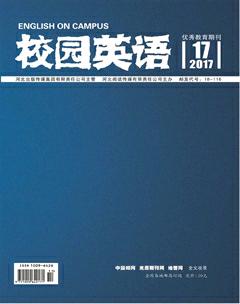Brief Analysis of Nida’s Dynamic Equivalence Theory
【Abstract】Dynamic Equivalence is the significant modern translation theory in the world. This paper aims to give a brief analysis and helps to present a more comprehensive understanding of Dynamic Equivalence Theory.
【Key words】Dynamic Equivalence; Translation Theory
1. The overview of Nidas Dynamic Equivalence Theory
As “the father of American translation theory”, Nida has been one of the most famous translation theorists in the world. His translation theory was originally generated from his Bible translation practice during 1940s. During 1960s, Nida introduced two types of equivalence—formal equivalence and dynamic equivalence. From his perspective, formal equivalence is simple and source-oriented. It is like a word-for-word literal translation. Among these two theories, Nida puts the dynamic equivalence in the first place. It has been viewed as his core contribution to the modern translation filed.
Dynamic equivalence was first mentioned in Towards a Science of Translating (Nida, 1964) and then further explained in The Theory and Practice of Translating (Nida and Taber, 1969) Nida postulated the concept of dynamic theory as “in terms of degree to which the receptors of the message in the receptor language respond to it in substantially the same manner as the receptors in the source language.” (Nida and Taber, 1969: 159) To be more specific, the dynamic equivalence considers more about the relationship between readers and message, which means the target readers response to the target text should be the same with the source readers response to the source text. In Nidas eyes, dynamic equivalence is the closest natural one to the source message. It requires both appropriate and natural words to make the target text more fluent and readable. Any foreignness and translationese should be avoided in the target text.
2. The advantages of Nidas Dynamic Equivalence Theory
Tracing back to the origins, in my opinion, the dynamic equivalence is somewhat like the refinement of free translation. On the one hand, it maintains the essence of free translation, that is, translation should achieve the same effect rather than being limited in the content and form. On the other hand, it emphasizes more on the readers response and analyses the translation process from the perspective of target readers. Therefore, translation has not been a single activity and added with more social elements, which makes itself concrete and specific.
3. The limitations of Nidas Dynamic Equivalence Theory
Although the dynamic equivalence theory gains a lot of good reputation, it still has some limitations.
To start with, it simply bonds the translation with language transformation and ignores the cultural information that language carries, which results in cultural domestication. In fact, cultural differences are objective and inevitable, no one can avoid them. If you have to keep a dynamic equivalence in translation, it will definitely exert a negative impact on the cultural communication. For instance, the east wind is a positive image in Chinese cultural while western society considers the west wind as the good moral. Hence, it very strange to translate Shelleys Ode to the west wind into 《東風頌》, because it will hinder Chinese readers to learn the western world.
Whats more, it is uncertain and not practical to judge whether or not the target readers have got the similar effect, since they differs in gender, ages, education backgrounds and life experience, etc. Strictly speaking, readers response is a variable which cannot be regarded as the criterion for the equivalence effect.
Finally, dynamic equivalence performs well in informative text, like Bible, but it is difficult to achieve in literary translation. The literal language is different from the general language, for it is the foundation of depicting literal figures and expressing the gist. Usually, the language has implied much information served for the theme. Therefore, the dynamic equivalence will lead to a depreciation of literal features since the translator will have over-emphases on the naturalness by changing the lexicon, sentence structure and grammar.
References:
[1]Nida,E.A.&C.R.Taber.The Theory and Practice of Translation [M].Leiden:E.J.Brill,1969.
[2]吳麗.奈達的翻譯理論淺議[J].外語教學與研究,(25):48-49.
作者簡介:孫野(1990-), 男, 四川傳媒學院外國語部助教, 香港中文大學碩士研究生, 研究方向:英語測試學、電腦輔助翻譯。

